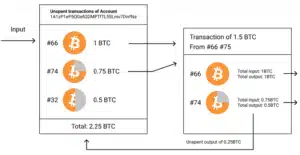Inside the Digital Yuan: A Modern Financial Odyssey

In the realm of modern finance, the Digital Yuan stands as a testament to China’s commitment to innovation and its ambition to shape the future of money. Exploring the dynamic landscape of digital currencies is made accessible with Go yuan-global.io, enabling users to seamlessly engage with this new era of financial evolution. This article delves deep into the concept, development, and implications of the Digital Yuan, offering a comprehensive understanding of this groundbreaking digital currency.
Table of Contents
Definition and Significance of the Digital Yuan
The Digital Yuan, also known as Digital Currency Electronic Payment (DCEP), represents China’s official digital currency. Unlike cryptocurrencies such as Bitcoin or Ethereum, it is a centralized digital currency issued and regulated by the People’s Bank of China (PBOC). Its significance lies in its potential to revolutionize financial transactions, enhance monetary policy, and provide a blueprint for digital currencies worldwide.
Historical Context of Digital Currencies
The emergence of the Digital Yuan is rooted in the rise of cryptocurrencies over the past decade. Bitcoin, the first and most well-known cryptocurrency, sparked a global conversation about the future of money. Central banks worldwide took note, exploring the possibilities and challenges of digital currencies.
Purpose and Goals of the Digital Yuan Project
China embarked on the Digital Yuan project with specific goals in mind. These include reducing the reliance on physical cash, improving financial inclusivity, and enhancing the efficiency of transactions. Additionally, the Chinese government aims to establish a controlled and secure digital currency that can compete with existing payment systems.
The Birth of Digital Currency
The Rise of Cryptocurrencies and Their Impact on Central Banks
The advent of cryptocurrencies challenged the conventional understanding of money and finance. Decentralized, borderless, and highly secure, cryptocurrencies forced central banks to reconsider their role and adapt to a changing financial landscape.
China’s Role in Pioneering the Digital Yuan
China’s pursuit of digital currency predated many other nations. As early as 2014, the PBOC began researching and experimenting with digital currencies. This proactive approach allowed China to take a leading position in the development of central bank digital currencies (CBDCs).
The Motivation Behind Creating a Digital Version of the Chinese Yuan
The primary motivation behind the Digital Yuan is to modernize China’s financial infrastructure. By digitizing the yuan, the Chinese government can reduce the cost of printing and distributing physical currency while enhancing transparency and traceability.
Understanding the Digital Yuan Infrastructure
The Technology Behind the Digital Yuan: Blockchain and DLT
While cryptocurrencies often rely on blockchain technology, the Digital Yuan utilizes a combination of distributed ledger technology (DLT) and centralized control. This blend ensures scalability, security, and regulatory oversight.
Centralized vs. Decentralized: How the Digital Yuan Differs from Cryptocurrencies
Unlike cryptocurrencies that operate on decentralized networks, the Digital Yuan maintains central control. This centralization allows for government oversight, preventing illicit activities while still offering the benefits of digital currencies.
Security and Privacy Considerations
The Digital Yuan places a strong emphasis on security and privacy. It employs encryption techniques and authentication mechanisms to safeguard transactions and user information. However, it also raises concerns about government surveillance and data privacy.
The Digital Yuan in Practice
How to Obtain and Use the Digital Yuan
Acquiring and using the Digital Yuan is a straightforward process. Users can download a digital wallet linked to their bank account, enabling them to make transactions seamlessly. This accessibility enhances financial inclusion, particularly for those without traditional bank accounts.
Transaction Speed and Efficiency Compared to Traditional Banking Systems
One of the Digital Yuan’s standout features is its speed and efficiency in processing transactions. Cross-border payments that typically take days can now be completed in seconds, reducing transaction costs and time delays.
Real-World Applications: E-commerce, Cross-Border Trade, and Financial Inclusion
The Digital Yuan has already found practical applications in various sectors. E-commerce platforms, such as Alibaba and JD.com, now accept digital yuan payments. Cross-border trade benefits from swift and secure transactions, while marginalized populations gain access to the formal financial system.
Impact on Traditional Banking
The Role of Commercial Banks in a Digital Currency Ecosystem
The Digital Yuan challenges the traditional banking model. Commercial banks may see a reduced role in payment processing as the central bank assumes more responsibility. However, they can still provide value-added services and adapt to new financial paradigms.
Potential Challenges and Opportunities for Traditional Financial Institutions
While traditional banks face disruption, they also have opportunities to innovate and collaborate within the Digital Yuan ecosystem. By embracing digital currency, they can enhance their services and remain relevant in the changing financial landscape.
Regulatory Implications and Government Oversight
The Digital Yuan introduces new regulatory challenges. Governments must strike a balance between fostering innovation and protecting consumers. They must also address concerns related to anti-money laundering (AML) and know-your-customer (KYC) regulations.
Geopolitical Implications
The Global Response to the Digital Yuan
The global community closely monitors China’s progress with the Digital Yuan. Other countries are exploring CBDCs, leading to potential collaborations or competition in the digital currency space.
How China’s Digital Currency Could Influence the Global Financial Landscape
China’s influence extends beyond its borders. The widespread adoption of the Digital Yuan in international trade could shift the global financial center of gravity away from the US dollar.
Possible Collaborations and Conflicts with Other Digital Currencies
Collaborations between digital currencies are conceivable, but conflicts may also arise as nations compete for dominance in the digital currency arena.
Future Prospects and Challenges
The Roadmap for the Digital Yuan’s Development
China has ambitious plans for the Digital Yuan, including its use in the 2022 Winter Olympics and beyond. The roadmap includes further expansion into retail, wholesale, and cross-border transactions.
Adoption Hurdles and Public Trust Issues
Wide-scale adoption of the Digital Yuan requires overcoming trust issues and ensuring user confidence in the currency’s stability and security.
Potential Innovations and the Evolution of Digital Currencies
The Digital Yuan is a significant step in the evolution of digital currencies. It may serve as a blueprint for other nations and influence the development of future CBDCs.
Conclusion
The Digital Yuan represents a transformative journey into the future of finance. As we navigate this modern financial odyssey, we witness the convergence of technology, economics, and geopolitics. The implications of the Digital Yuan extend far beyond China’s borders, shaping the global financial landscape in unprecedented ways. As the world watches, the story of the Digital Yuan continues to unfold, promising both challenges and opportunities for the future of money.






